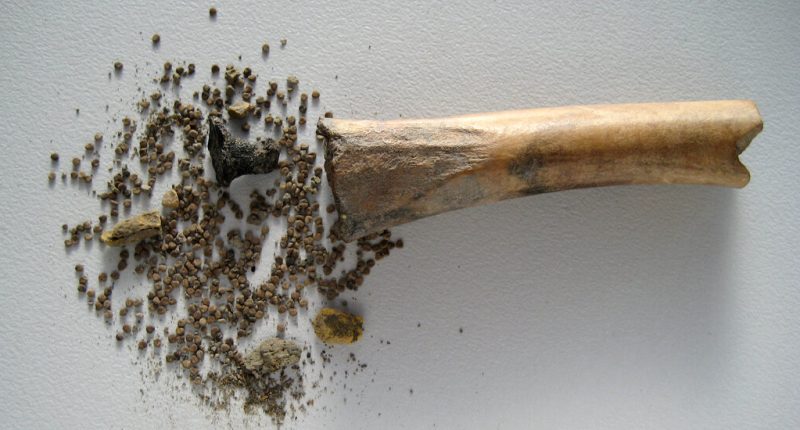Black henbane has been found at archaeological sites in the Netherlands that date back to the Neolithic Period. But because it is a wild plant that readily grows in the disturbed soil near settlements, experts have been unable to ascertain whether it was used by people or was just part of the environment.
In 2008, for example, archaeologists found a Roman-Era ceramic beaker in Voorburg that had been filled with dirt over time. In the dirt, they found one black henbane seed along with 26 hazelnuts and a single grain each of corn, barley, wheat and various other seeds. “The overall composition of the seeds seemed to point at the intentional use of black henbane as some kind of medicine or hallucinogen,” said Jasper de Bruin, the curator of the “Netherlands in Roman Times” collection at the National Museum of Antiquities in Leiden, who was not involved in the new research.
However, according to Laura Kooistra, a retired archaeobotanist and a co-author on the latest findings, a single seed embedded in soil does not provide the degree of certainty needed to draw conclusions about whether black henbane was used by people. “One swallow does not make a summer,” she said.
The bone container, on the other hand, does provide that level of smoking-gun evidence. “It shows, for the first time in Western Europe, the deliberate collection of seeds of the poisonous black henbane during the Roman Period,” said Otto Brinkkemper, an archaeobotanist at the Cultural Heritage Agency of the Netherlands, who was not involved in the research.
Experts can only guess, though, what purpose the seeds might have served.
The authors of the new study refer to black henbane as a medicinal plant, said Astrid Van Oyen, an archaeologist at Radboud University in Nijmegen, who was not involved in the research. But it is also possible that black henbane was used by people “actively seeking psychoactive experiences” for spiritual, therapeutic or recreational purposes, she said.
“This find shows us a rare glimpse of a possible way in which people navigated and mediated the anxieties, stresses, hopes and aspirations of daily life,” Dr. Van Oyen said. “Whoever collected all these seeds in this makeshift container did this deliberately and skillfully — they knew what they were doing.”
Also Read More: World News | Entertainment News | Celebrity News








